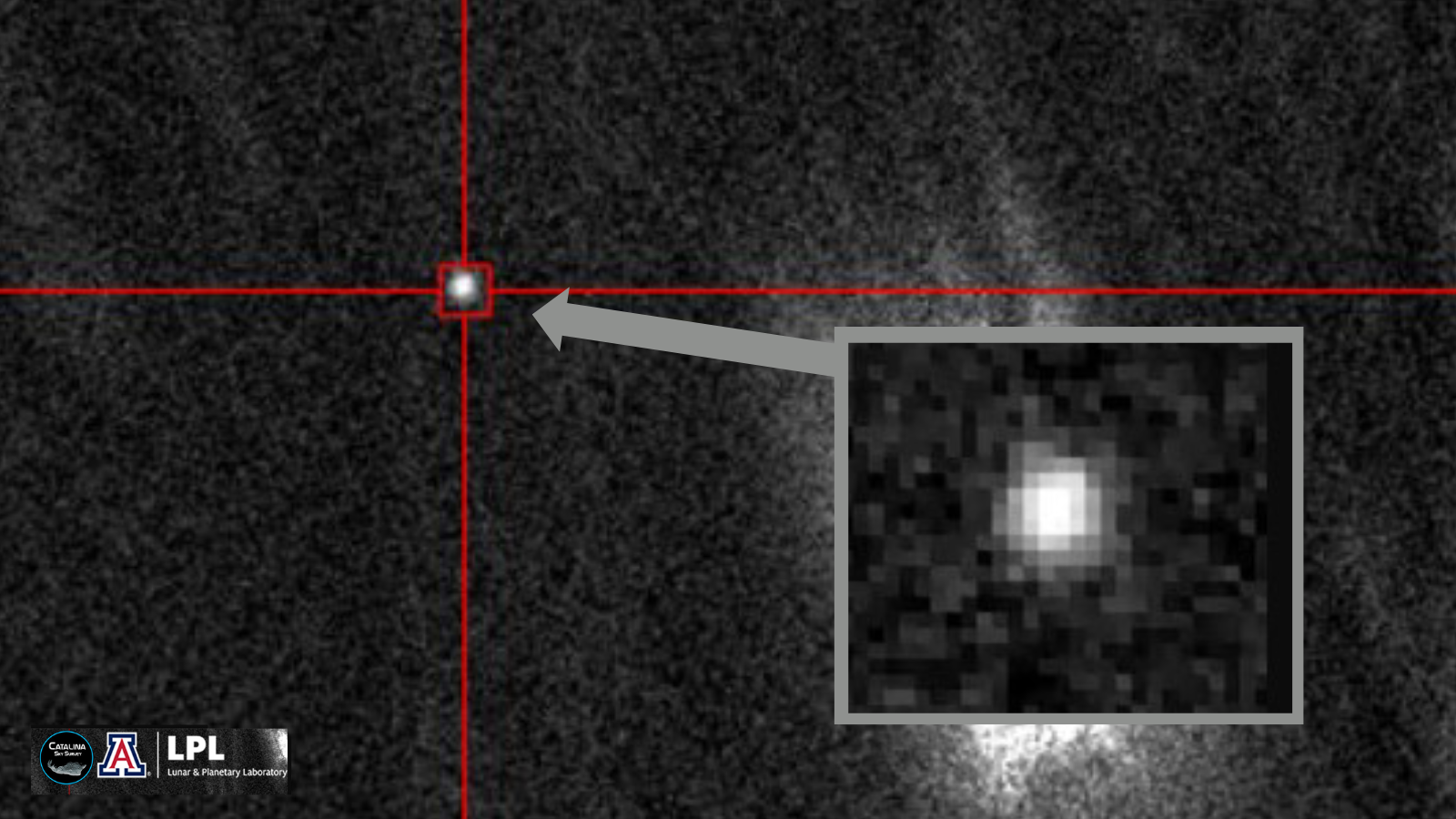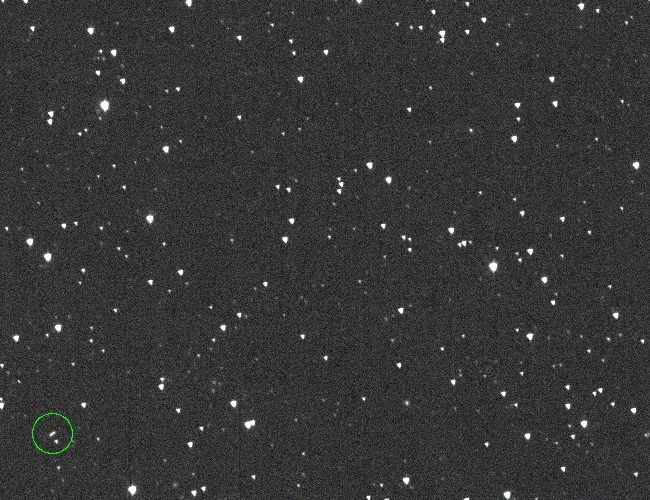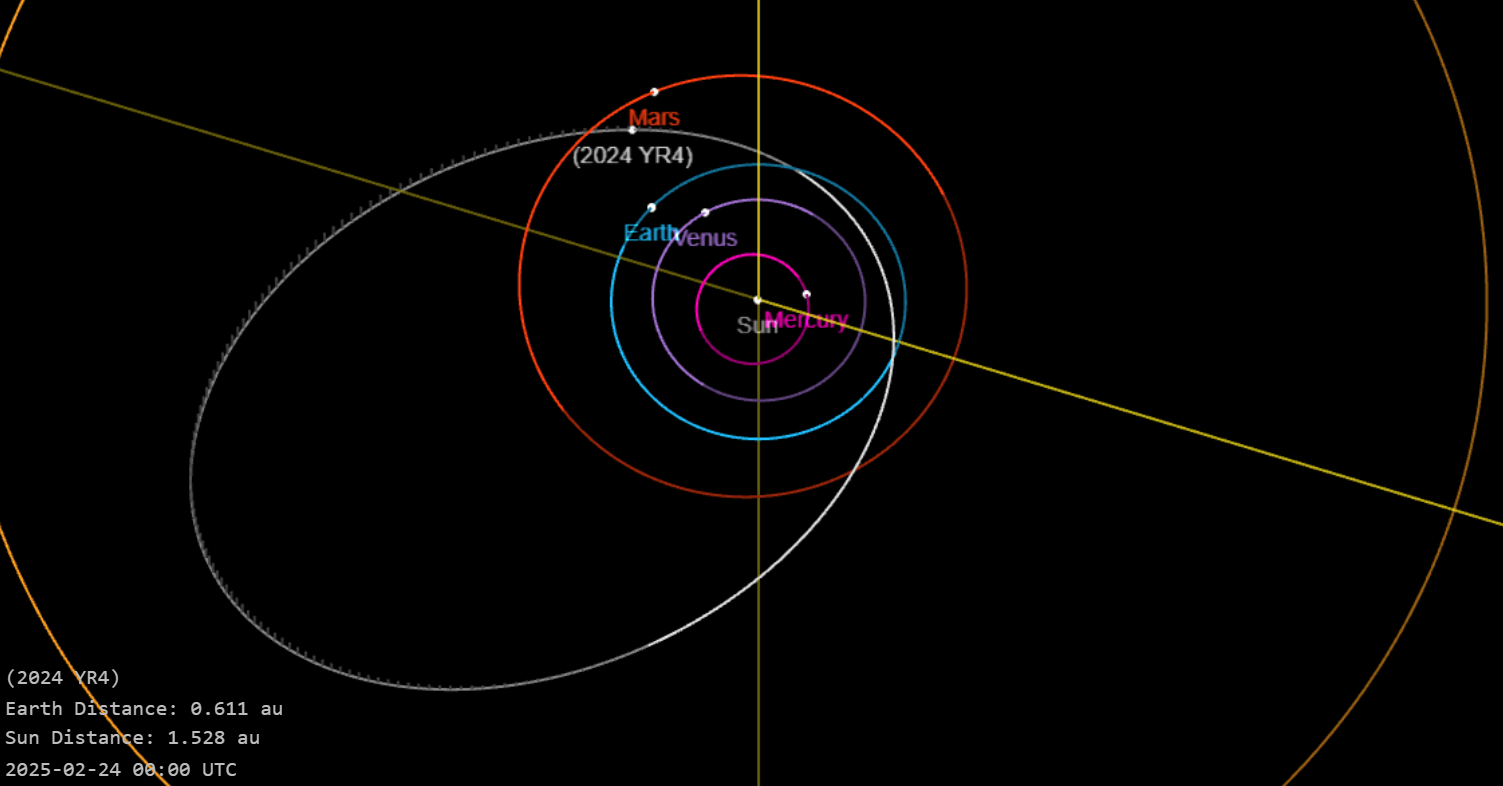Time to breathe a sigh of relief. The asteroid that once posed the greatest impact risk to Earth in recorded history now has an effective 0% chance of striking our planet. The probability of asteroid 2024 YR4 hitting Earth was reduced to zero thanks to new data collected on Sunday, Feb. 23.
Discovered in Dec. 2024, 2024 YR4 quickly climbed to the top of NASA’s Sentry Risk table, at one point having a 1 in 32 chance of hitting Earth. This elevated it to Level 3 on the Torino scale, a system used since 1999 to categorize potential Earth impact events.
Level 3, which falls within the yellow band of the Torino Scale, is described as: “A close encounter, meriting attention by astronomers. Current calculations give a 1% or greater chance of collision capable of localized destruction.”
“The NASA JPL Center for Near-Earth Object Studies (CNEOS) now lists the 2024 YR4 impact probability as 0.00005 (0.005%) or 1-in-20,000 for its passage by Earth in 2032,” Richard Binzel, Professor of Planetary Science at the Massachusetts Institute of Technology (MIT) and creator of the Torino scale exclusively told Space.com. “That’s impact probability zero folks!”
This conforms to the second part of the Torino scale level 3 description, which states: “Most likely, new telescopic observations will lead to re-assignment to Level 0. Attention by public and by public officials is merited if the encounter is less than a decade away.”
“Asteroid 2024 YR4 has now been reassigned to Torino Scale Level Zero, the level for ‘No Hazard’ as additional tracking of its orbital path has reduced its possibility of intersecting the Earth to below the 1-in-1000 threshold,” Binzel continued. “1-in-1000 is the threshold established for downgrading to Level 0 for any object smaller than 100 meters; YR4 has an estimated size of 164 feet (50 meters).”

As 2024 YR4 has continued to merit attention from news organizations across the globe, Space.com has been consulting with asteroid hunter David Rankin of the Catalina Sky Survey, who found images of the space rock in archival data that was gathered prior to its official discovery.
From the outset, Rankin anticipated that 2024 YR4’s impact odds would initially rise before dropping dramatically. He explained where this uncertainty originates when tracking an asteroid’s trajectory.
“Imagine holding a stick that is a few feet long. If you move the stick in your hand a fraction of an inch, you hardly notice any movement on the other end,” Rankin said. “Now imagine that stick is many millions of miles long. Moving your hand a fraction of an inch will cause dramatic changes on the other end.”
That “fraction of an inch” movement is analogous to the tiny uncertainties in the positional measurements of the asteroid from the telescope’s imaging the asteroid which arises from small timing errors and minor positional errors.
As more observations are collected, these uncertainties begin to be eliminated.

Though asteroid 2024 YR4 is likely to now drop from public attention, Binzel rounded up some of the points that we should all remember from the evolution of this story.
“As 2024 YR4 fades away from the news cycle, I think there is an overall context that is the most important takeaway news,” the MIT researcher said. “An object the size of YR4 passes harmlessly through the Earth-moon neighborhood as frequently as a few times per year.
“The YR4 episode is just the beginning for astronomers gaining the capability to see these objects before they come calling through our neck of the woods.”
Binzel added that, as with 2024 YR4, some newly discovered asteroids will initially have uncertain miss distances, but follow-up observations will clarify their paths.

“But, just like YR4, with a little time and patient tracking, we will be able to rule out entirely any hazard,” he continued. “This means that objects with low categories on the Torino Scale are likely to be a common occurrence, of interest to space enthusiasts and astronomers for follow-up, but not particularly newsworthy.”
While 2024 YR4 poses no threat, it will still have a major scientific impact when it passes Earth in 2028 and again in 2032.
On Dec. 17, the asteroid will come to within 5 million miles of Earth. Then, on Dec.22, 2032, 2024 YR4 will pass within just 167,000 miles of our planet. For context, the moon is 238,855 miles away.
While the general public can sleep soundly knowing that 2024 YR4 won’t hit Earth, unleashing city-wide devastation, scientists will relish the opportunity to study this space rock in detail.
“Rather than making anyone anxious, by finding these objects that are already out there and pinning down their orbits, we are becoming more secure in our knowledge that any sizable asteroid is not likely to take us by surprise,” Binzel concluded.
Article by:Source:












